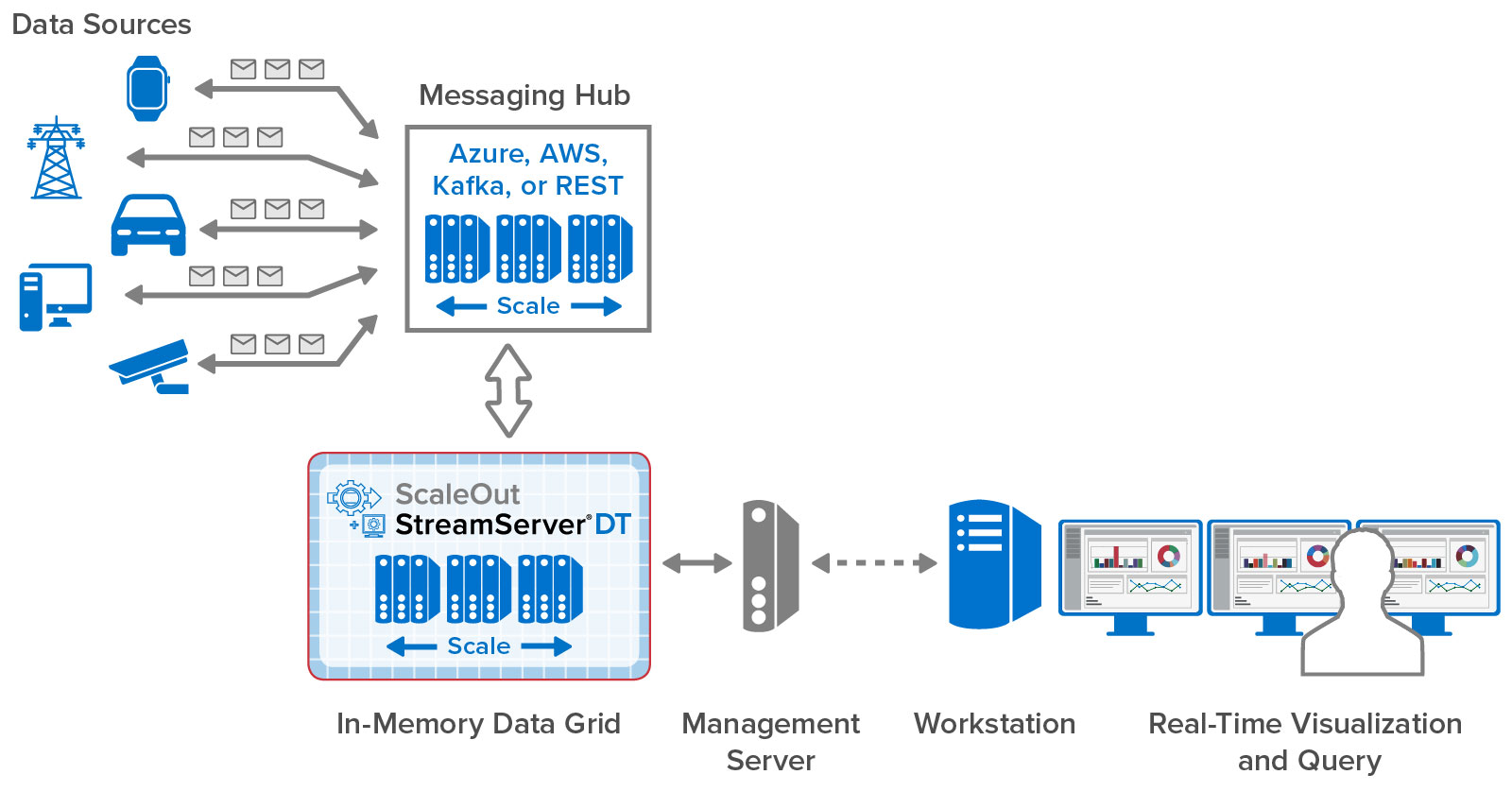
With the ScaleOut Digital Twin Streaming Service™, an Azure-hosted cloud service, ScaleOut Software introduced breakthrough capabilities for streaming analytics using the real-time digital twin concept. This new software model enables applications to easily analyze telemetry from individual data sources in 1-3 milliseconds while maintaining state information about data sources that deepens introspection. It also provides a basis for applications to create key status information that the streaming platform aggregates every few seconds to maximize situational awareness. Because it runs on a scalable, highly available in-memory computing platform, it can do all this simultaneously for hundreds of thousands or even millions of data sources.
The unique capabilities of real-time digital twins can provide important advances for numerous applications, including security, fleet telematics, IoT, smart cities, healthcare, and financial services. These applications are all characterized by numerous data sources which generate telemetry that must be simultaneously tracked and analyzed, while maintaining overall situational awareness that immediately highlights problems of concern an/or opportunities of interest. For example, consider some of the new capabilities that real-time digital twins can provide in fleet telematics and vaccine distribution during COVID-19.
To address security requirements or the need for tight integration with existing infrastructure, many organizations need to host their streaming analytics platform on-premises. Scaleout StreamServer® DT was created to meet this need. It combines the scalable, battle-tested in-memory data grid that powers ScaleOut StreamServer with the graphical user interface and visualization features of the cloud service in a unified, on-premises deployment. This gives users all of the capabilities of the ScaleOut Digital Twin Streaming Service with complete infrastructure control.
As illustrated in the following diagram, ScaleOut StreamServer DT installs its management console on a standalone server that connects to ScaleOut StreamServer’s in-memory data grid. This console hosts the graphical user interface that is securely accessed by remote workstations within an organization. It also deploys real-time digital twin models to the in-memory data grid, which hosts instances of digital twins (one per data source) and runs application-defined code to process incoming messages. Message are delivered to the grid using messaging hubs, such as Azure IoT Hub, AWS IoT Core, Kafka, a built-in REST service, or directly using APIs.

The management console installs as a set of Docker containers on the management server. This simplifies the installation process and ensures portability across operating systems. Once installed, users can create accounts to control access to the console, and all connections are secured using SSL. The results of aggregate analytics and queries performed within the in-memory data grid can then be accessed and visualized on workstations running throughout an organization.
Because ScaleOut’s in-memory data grid runs in an organization’s data center and avoids the requirement to use a cloud-hosted message hub or REST service, incoming messages from data sources can be processed with minimum latency. In addition, application code running in real-time digital twins can access local resources, such as databases and alerting systems, with the best possible performance and security. Use of dedicated computing resources for the in-memory data grid delivers the highest possible throughput for message processing and real-time analytics.
While cloud hosting of streaming analytics as a SaaS (software-as-a-service) offering creates clear advantages in reducing capital costs and providing access to highly elastic computing resources, it may not be suitable for organizations which need to maintain full control of their infrastructures to address security and performance requirements. ScaleOut StreamServer DT was designed to meet these needs and deliver the important, unique benefits of streaming analytics using real-time digital twins to these organizations.
